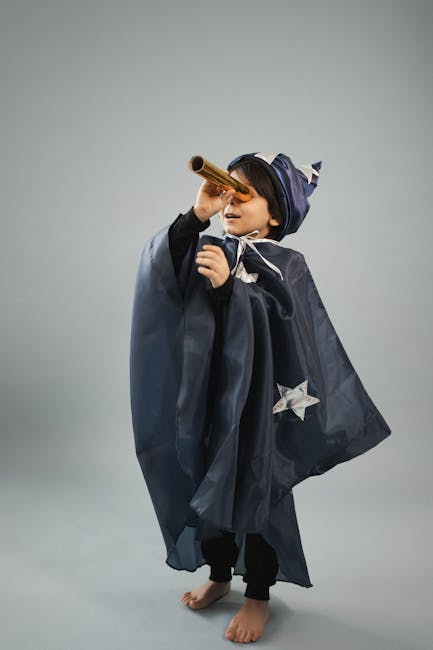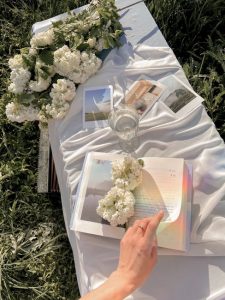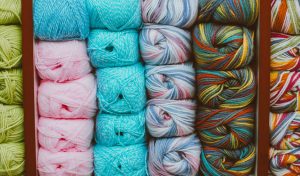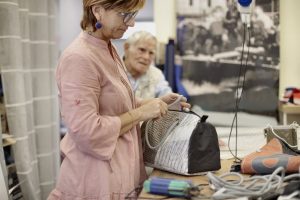Applique Quilting: A Guide to Embellishing Your Quilts
Appliqué quilting, the art of embellishing quilts with fabric cutouts, adds a unique dimension of beauty and personalization to these beloved textile creations. This technique involves carefully cutting and attaching intricate fabric shapes, creating stunning designs and patterns on the quilt’s surface. The process of appliqué can be traced back centuries, with evidence of its use found in various cultures worldwide. From ancient Egyptian textiles with geometric shapes to traditional Japanese kimonos featuring intricate floral motifs, appliqué has been a cherished method of embellishing fabrics for generations.
The beauty of appliqué quilting lies in its versatility and adaptability. It allows quilters to express their style and preferences through fabric, design, and stitching techniques. Whether you’re drawn to classic motifs like flowers and animals, contemporary abstract patterns, or personalized designs inspired by your own experiences, appliqué provides a canvas for your creative vision. The endless possibilities make appliqué a captivating and fulfilling art form for quilters of all skill levels.
Throughout history, appliqué quilting has evolved and adapted to reflect each era’s changing tastes and trends. Traditional appliqué techniques often involved using simple shapes and hand-stitching methods, resulting in functional and decorative quilts. As the art form progressed, new techniques, such as machine appliqué and fusible web, allowed greater precision and speed in the creation process. Contemporary appliqué quilting embraces a wide range of styles, from minimalist designs to intricate and layered compositions, showcasing modern quilters’ boundless creativity and innovation.
The appeal of appliqué quilting extends beyond its aesthetic qualities. Meticulously cutting and stitching fabric shapes, carefully choosing complementary colors, and crafting a cohesive design is a meditative and rewarding experience. The process fosters a sense of accomplishment and pride as each stitch contributes to creating a unique and cherished piece of art. Moreover, appliqué quilting offers a beautiful opportunity for self-expression and storytelling, allowing quilters to imbue their creations with personal meaning and symbolism.
In this comprehensive guide, we will embark on a journey into the world of appliqué quilting, exploring its rich history, diverse techniques, and endless possibilities. We will delve into the fundamentals of appliqué, covering essential materials, tools, and stitching methods. We will also explore various design inspirations, from traditional patterns to contemporary interpretations, to ignite your creativity and empower you to create your breathtaking appliqué masterpieces.
Types of Applique Techniques
Various techniques are used in applique quilting, each with unique characteristics and aesthetic appeal. Some popular methods include:
Needle-Turn Applique
Needle-turn applique is a traditional method that involves turning the raw edges of the fabric pieces under and stitching them down by hand. This technique creates an exact and clean finish, showcasing the intricate details of the design. It requires patience and meticulousness, but the results are truly stunning. Needle-turn applique is often used for elaborate designs, such as floral motifs, animals, or geometric patterns. The precision of the technique allows for a delicate and refined look, making it ideal for showcasing fine details and textures in the fabric.
Machine Applique
Machine applique simplifies the process by using a sewing machine to attach the fabric shapes to the background. This technique allows for faster stitching, especially for larger projects or intricate designs. Different types of machine feet, such as the applique foot, are specifically designed for this purpose, ensuring a smooth and secure attachment. Machine applique can be used for various designs, from simple geometric shapes to complex floral motifs. It’s a versatile technique that can be adapted to different styles and preferences.
Free-Motion Applique
Free-motion applique involves using a sewing machine with lowered feed dogs, allowing freehand stitching. This technique provides greater control and flexibility in creating unique stitching patterns and designs. It’s a versatile method suitable for both intricate and bold designs. Free-motion applique is a popular choice for quilters who want to add a personal touch to their work. It allows for creative freedom in stitching and creating various textures and effects. For example, free-motion stitching can create a flowing, organic look or a more structured, geometric design.
Materials for Applique Quilting
Suitable materials are crucial for achieving high-quality results in applique quilting. Here are the essential components:
Fabric
Choose fabrics that are appropriate for the applique technique you’re using. Cotton fabrics, such as quilting cotton and calico, are famous for their durability and ease of handling. Consider using lightweight fabrics that are easy to manipulate and stitch for intricate designs. Consider color, texture, and weight when selecting fabrics to create a cohesive and visually appealing design. For example, you might choose a lightweight silk for delicate floral designs, while a heavier cotton fabric would be more suitable for bold geometric shapes.
Thread
Matching thread color to the fabric is essential for achieving a seamless and refined finish. High-quality thread, such as quilting or embroidery, is recommended for its durability and strength. Consider using a thread that complements the fabric color and design. For example, you might use a contrasting thread color to highlight the edges of the applique shapes or a matching thread color to create a more subtle and blended look.
Stabilizer
The stabilizer supports the fabric during stitching, preventing puckering and distortion. It can be applied to the back of the applique fabric or the quilt backing. Different stabilizers, such as tear-away or wash-away, are available, each with its properties and applications. A tear-away stabilizer is typically used for machine applique, as it can be easily removed after stitching. A wash-away stabilizer is often used for needle-turn applique, as it dissolves in water after the stitching is complete.
Applique Scissors
Applique scissors with sharp blades and pointed tips are essential for precisely cutting fabric shapes. These scissors are designed to handle the delicate nature of applique work, ensuring clean and accurate cuts. Applique scissors are available in various sizes, so choose a pair that is comfortable to use and provides the level of precision you need for your project.
Design Inspiration and Resources
Finding inspiration and resources for your applique designs is a key part of the creative process. Here are some helpful avenues to explore:
Online Tutorials and Patterns
Numerous websites and online platforms offer free and paid applique patterns, tutorials, and step-by-step instructions. These resources guide different techniques, design ideas, and project suggestions. Some popular online resources for applique quilting include Craftsy, AllFreeSewing, and Quiltmania. These websites offer patterns, tutorials, and articles on applique quilting, covering various skill levels and styles.
Quilt Books and Magazines
Quilt books and magazines feature applique designs, techniques, and project ideas. They offer a wealth of inspiration and information, showcasing the work of experienced quilters and sharing their tips and tricks. Some popular quilt books and magazines that feature applique quilting include ‘The Quilter’s Apprentice’ by Sally Collins, ‘The Complete Book of Applique’ by Pat Sloan, and Quiltmaker magazine. These resources provide a comprehensive overview of applique quilting, from basic techniques to advanced designs.
Applique Workshops and Classes
Attending workshops or classes led by experienced applique quilters provides hands-on learning and personalized instruction. You can gain valuable techniques, learn from experts, and connect with other quilters. Many local quilt shops and community centers offer applique workshops and classes. These classes provide an excellent opportunity to learn from experienced quilters, ask questions, and get feedback on your work.
Applique quilting, with its ability to transform fabric into captivating designs, is a testament to the enduring power of creativity and craftsmanship. The process, though intricate, is advantageous, offering a canvas for individual expression and the satisfaction of bringing fabric art to life. Quilters can explore a wide range of artistic possibilities by mastering diverse techniques, from simple needle-turn to the more intricate free-motion applique.
The beauty of applique quilting lies in its versatility. Whether you’re drawn to the timeless elegance of traditional patterns, such as floral motifs and geometric shapes, or the bold, modern interpretations that push boundaries, applique offers a platform for your unique vision. The possibilities are limitless, from delicate, ethereal designs to vibrant, bold statements. The art of applique allows you to create quilts that adorn your home and tell your personal story, reflecting your passions, memories, and artistic sensibilities.
Beyond its aesthetic appeal, applique quilting fosters a sense of connection to a rich history of textile arts. It’s a tradition passed down through generations, with each stitch carrying the weight of centuries of creativity and innovation. Engaging in this craft makes you part of a legacy transcending time, contributing to the ever-evolving tapestry of textile art. Creating an applique quilt is not just about crafting a beautiful object; it’s about connecting with a shared human experience, one that celebrates the beauty of fabric, the artistry of the needle, and the enduring power of creativity.
As you embark on your applique quilting journey, remember that the process is as important as the final product. Embrace the challenges, celebrate the successes, and allow yourself to be guided by intuition. The beauty of applique quilting lies not only in the finished quilt but also in the journey of discovery, experimentation, and personal growth. With each stitch, you’ll gain a deeper understanding of your creativity, develop a newfound appreciation for the artistry of fabric, and create a lasting legacy of beauty and craftsmanship.

Photo by Monstera Production on Pexels








I don’t think the title of your article matches the content lol. Just kidding, mainly because I had some doubts after reading the article.
Your article helped me a lot, is there any more related content? Thanks!